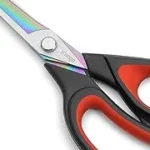If you’ve ever wondered why grapes are so expensive, you’ve come to the right place! 🍇 In this article, we’ll delve into the fascinating world of grape production and discover the reasons behind their hefty price tag. So, grab a bunch of grapes and get ready to explore why these little fruits can sometimes leave a big dent in your wallet.
Have you ever thought about the hard work that goes into growing grapes? Well, it turns out that cultivating these juicy wonders is no easy feat. From carefully tending to the vines to protecting them from pests, farmers invest a significant amount of time, effort, and resources into producing top-quality grapes. But that’s not all – factors like weather conditions and location also play a vital role in determining the cost of grapes, making them a precious commodity.
But wait, there’s more to the story! 🌿 The journey from the vineyard to your local grocery store involves several steps, each adding to the overall cost. From harvesting and transportation to processing and packaging, numerous factors contribute to the final price you pay at the checkout counter. So, next time you enjoy a succulent grape, remember that a lot goes into making them available for you to savor.
So, why are grapes so expensive? Join us as we dive deeper into the world of grape production, uncovering the secrets behind their hefty price tags. From the farm to your table, we’ll explore the fascinating journey of these delightful fruits and gain a newfound appreciation for the hard work that goes into bringing them to your shopping cart. 🍇
Unveiling the Mystery: Why Grapes Are Priced Differently
Discovering the factors behind grape prices can shed light on their seemingly high cost. Factors like grape variety, growing conditions, and labor costs contribute to pricing variations. Additionally, the demand and supply dynamics, transportation expenses, and even marketing strategies can affect grape prices. While some varieties are more expensive due to their flavor profile, others require meticulous cultivation methods. Understanding these factors helps decipher the intriguing world of grape prices.
Why Are Grapes So Expensive?
Grapes are a delicious and nutritious fruit that many people enjoy. However, you may have noticed that grapes can sometimes be quite expensive compared to other fruits. In this article, we will explore the reasons behind the high cost of grapes and delve into various factors that contribute to their price. Whether you’re a grape lover or simply curious about the economics of fruit, this article will provide you with a comprehensive understanding of why grapes are so expensive.
The Seasonal Nature of Grapes
Grapes are a seasonal fruit, meaning they have a limited growth period during the year. This seasonality affects the supply and demand dynamics of grapes, making them more costly compared to fruits that are available year-round. During the off-season, when grapes are not in harvest, the supply decreases, causing prices to rise. Additionally, since grapes have a relatively short shelf life, they require careful handling and transportation, further adding to their cost.
Grapes are also vulnerable to weather conditions, such as frost, drought, and excessive heat, which can greatly impact their yields. If a grape-growing region experiences unfavorable weather patterns, it can lead to crop failures and decrease the overall grape supply. When supply is low, prices increase due to scarcity and the additional costs associated with overcoming the challenges presented by adverse weather conditions.
Beyond the seasonal and weather factors, the cultivation process of grapes itself is labor-intensive and requires significant resources. Vineyards need careful maintenance, including pruning, fertilizing, watering, and pest control measures. These tasks often need to be done manually, demanding skilled labor and incurring costs. The investment in land, equipment, and labor drives up the price of grapes, contributing to their high cost.
High Demand for Specialty Varieties
Another reason for the high cost of grapes is the increasing demand for specialty and exotic varieties. As consumers become more adventurous and seek unique flavors or rare grape types, the market responds by offering a wide range of options. These specialty grapes are usually grown on a smaller scale and have limited availability, making them more expensive. Moreover, the cost of developing and maintaining these unique grape varieties adds to their higher price.
Additionally, the production of high-quality grapes for winemaking is a significant factor in the price of certain grape varieties. Grapes used for winemaking require specific characteristics and meticulous growing conditions. From the carefully controlled environments to the expertise of winemakers, the entire process is extensive and costly. As a result, these grapes are typically more expensive due to the complexity and precision involved in their cultivation.
Transportation and Distribution Costs
Grapes are often grown in specific regions or countries known for their ideal grape-growing conditions. When grapes need to be transported long distances to reach consumers in other areas, transportation costs play a significant role in their overall price. Shipping grapes requires careful packaging, refrigeration, and timely delivery to maintain their freshness and quality. These factors contribute to the expenses incurred during transportation, resulting in higher prices for consumers.
The distribution process further impacts the cost of grapes. Once grapes reach their destination, they need to be handled and sorted to ensure they meet quality standards. Retailers also need to cover their own costs, including store overheads, storage, and marketing, leading to higher prices on store shelves. The various steps involved in transportation and distribution all add to the final cost of grapes, making them more expensive for consumers.
Additional Factors Contributing to Grape Prices
In addition to the factors discussed above, there are various other aspects that contribute to the high cost of grapes:
Farm Labor Costs
The labor required for grape cultivation, including harvesting, pruning, and general vineyard maintenance, is often performed by skilled workers who demand fair wages. These labor costs impact the overall price of grapes.
Quality Standards and Certification
Grapes that meet certain quality standards or certifications, such as organic or sustainable growing practices, often require additional resources and monitoring. These requirements increase production costs, which are ultimately passed on to consumers.
Import and Export Regulations
Grapes that are imported or exported face various regulations and fees, including tariffs and inspections. These factors can increase the price of grapes, particularly if they are sourced from distant locations.
Market Competition
Competition among growers and suppliers can affect grape prices. When multiple parties vie for limited market share, prices may rise due to increased demand or to cover the costs of advertising and promotional activities.
Economic Factors
Fluctuations in currency exchange rates, inflation, and other economic factors can impact the overall cost of grapes. Changes in global trade conditions and geopolitical events may also influence grape prices.
Efficient Supply Chain Management
An efficient supply chain, from the vineyards to the consumers, requires coordination, technology, and expertise. Investments in logistics and supply chain management can lead to higher grape prices.
Consumer Preferences
Consumer demand for specific grape varieties, such as seedless grapes or grapes with certain flavor profiles, can affect prices. Growers need to invest in meeting these preferences, which may increase production costs.
Environmental Sustainability
Sustainable farming practices, such as organic or biodynamic cultivation, can contribute to higher grape prices. These practices often require additional resources and manual labor, raising production costs.
Growing Conditions and Geographical Factors
Grapes are sensitive to their growing conditions. Premium grape-growing regions known for their exceptional quality often command higher prices due to favorable soil, climate, and geographical factors.
Marketing and Promotion
Grape growers and suppliers invest in marketing and promotional activities to create awareness and drive demand. These expenses are factored into grape prices.
Infrastructure and Technology
Modern infrastructure and technological advancements, such as automated irrigation systems or vineyard monitoring tools, require capital investments. These costs contribute to the price of grapes.
Varietal Characteristics
Specific grape varieties may have unique characteristics, such as distinct flavors or textures, that make them more desirable and, consequently, more expensive.
Pesticide and Pest Control
Grapes are susceptible to pests and diseases, requiring the use of pesticides for protection. Compliance with strict regulations and the costs associated with safe pesticide usage can increase grape prices.
Investments in Research and Development
Advancements in grape cultivation techniques and the development of new grape varieties involve extensive research and development, which incur costs that are reflected in grape prices.
By-Products and Secondary Markets
Grapes have several by-products, such as raisins, grape juice, and wines. The prices of these secondary products can influence the overall value of grapes.
Packaging and Presentation
Grapes need to be packaged in containers that protect their delicate nature and enhance their presentation. The cost of quality packaging contributes to grape prices.
Government Regulations and Subsidies
Government regulations and subsidies in different regions impact grape prices. Depending on the specific policies, these factors can either raise or lower the cost of grapes.
Customer Perception and Branding
The reputation of certain grape brands or regions can impact their perceived value and justify higher prices among consumers who prioritize brand recognition.
The Bottom Line
While grapes may seem expensive compared to other fruits, various factors contribute to their higher price tag. Seasonality, weather conditions, transportation costs, labor, specialty varieties, and quality standards all play a role in determining the price of grapes. Additionally, factors such as market competition, economic conditions, and growing practices further influence grape prices. However, understanding these factors gives consumers deeper insight into why grapes are priced the way they are. The next time you enjoy a bunch of grapes, you’ll have a better understanding of the complexities and factors behind their cost.
The Cost of Cultivation and Demand for Exotic Grapes
Specialty grape varieties often come with a higher price tag due to the unique demands of cultivating and producing these exquisite fruits. Farmers need to invest significant resources, including time, labor, and expertise, to grow and nurture these specialty grapes. Additionally, the demand for exotic grape varieties has been steadily increasing as consumers become more adventurous in their culinary explorations. This surge in demand drives up the prices of these exotic grapes as suppliers cannot easily meet the growing requests.
Weather Challenges and the Impact on Grape Prices
Grapes, like many fruits, are highly susceptible to the changes in weather patterns. Adverse weather conditions, such as frost, hail, extreme heat, or heavy rains, can devastate grape crops, resulting in lower yields and higher prices. These weather-related challenges affect grape cultivation in various ways. For example, frost can damage the delicate grapevines, impairing their ability to produce fruit. Droughts can deplete the water supply needed for healthy grape growth, leading to smaller harvests. Extreme heat can cause grape berries to shrivel or develop undesirable flavors. All of these weather-related issues reduce the overall grape supply, creating scarcity and driving up prices.
Grapes: A Delicate and Perishable Fruit
Grapes have a relatively short shelf life compared to other fruits. Their delicate skin and high water content make them susceptible to bruising, dehydration, and decay. To ensure that consumers receive the freshest and highest quality grapes, special care is required at each stage of the supply chain. This includes proper handling during harvesting, sorting, packaging, and transportation. The costs associated with this careful handling and rapid delivery contribute to the overall price of grapes. Additionally, the need for refrigeration and temperature-controlled environments further adds to the expenses incurred in transporting and storing grapes, ultimately influencing their price.
Key Takeaways: Why Are Grapes So Expensive?
- Grapes can be expensive due to various factors such as location, seasonality, and production costs.
- The cost of growing grapes differs depending on the region and climate they are grown in.
- Grape production requires careful maintenance and harvesting, which adds to the overall cost.
- Transportation costs also impact the price of grapes, especially if they need to be imported from other countries.
- Grapes with unique varieties or those grown organically may be pricier due to their limited availability and higher demand.
Frequently Asked Questions
Are grapes expensive because they are difficult to grow?
Grapes are not inherently difficult to grow. However, several factors contribute to their expense. First, certain varieties of grapes require specific climates and conditions, making them more challenging to cultivate. Many premium grape varieties, such as Cabernet Sauvignon or Pinot Noir, thrive in specific regions like Napa Valley or Burgundy, where land value is high. Additionally, these grapes often require handpicking, which is more labor-intensive and adds to the overall cost.
Why are organic grapes more expensive?
Organic grapes are typically more expensive due to the additional requirements and expenses associated with organic farming. Organic grape growers must adhere to strict guidelines and avoid the use of synthetic pesticides and fertilizers. These growers often spend more on labor-intensive practices, such as hand-weeding and natural pest control, to ensure the grapes meet organic standards. These additional costs are then passed on to the consumer, resulting in higher prices for organic grapes.
Moreover, organic grape yields can be lower than conventionally grown grapes due to the lack of synthetic interventions. This lower supply can also contribute to the higher price point of organic grapes.
Do grape varieties affect their price?
Definitely! Different grape varieties vary in price due to factors such as popularity, rarity, and taste. For instance, table grapes commonly found in grocery stores are typically more affordable because they are grown in large quantities and are readily available. On the other hand, unique or heirloom grape varieties that have a limited supply and distinct characteristics often come with a higher price tag. Additionally, certain grape varieties used in winemaking, such as the highly sought-after Cabernet Sauvignon or Pinot Noir, command higher prices due to their reputation and demand in the market.
Why are there price fluctuations in grape prices?
Grape prices can fluctuate due to various factors, including weather conditions, market demand, and production levels. Unfavorable weather events, such as droughts or excessive rain, can impact grape harvests, leading to lower yields and higher prices. Changes in consumer preferences and trends can also affect demand, causing variations in price. Additionally, the cost of production, such as labor, transportation, and packaging, can influence grape prices. These combined factors create a dynamic market where grape prices may rise or fall based on the current circumstances.
Are imported grapes more expensive?
Imported grapes are often more expensive due to the costs associated with transportation, customs, and potential tariffs. Grapes grown in distant locations must be transported over long distances, which requires careful handling and refrigeration to maintain their freshness. These additional logistical expenses are passed on to the consumer, resulting in higher prices for imported grapes. Additionally, importing countries may impose import duties or tariffs on certain agricultural products, including grapes. These levies increase the overall cost of the imported grapes, making them pricier compared to locally grown varieties.

Why Japanese Ruby Roman Grapes Are So Expensive | So Expensive
Summary
So, why are grapes so expensive? Well, it turns out that there are a few reasons.
First, growing grapes can be quite challenging. Farmers need to carefully tend to the vines, protect them from pests and diseases, and ensure they have the right amount of water and nutrients.
Second, grapes are delicate fruits that need to be handled with care. They can easily get damaged during transportation, which adds to the cost.
Lastly, there is a high demand for grapes, especially certain varieties. This drives up the price as growers and sellers can charge more for something that is in high demand.
In conclusion, the cost of grapes is influenced by the difficulties of cultivation, the fragile nature of the fruit, and the high demand for certain varieties. So the next time you reach for a bunch of grapes at the grocery store, remember the hard work and factors that contribute to their price.






